The relentless advance of technology has seenartificial intelligence (AI) systems, once considered exclusive to research, subtly integrate into the daily learning lives of university students. Anthropic recently released a significant large-scale research report analyzing millions of anonymized student conversations on its Claude.ai platform. This offers the first glimpse into how university students use this emerging tool in real-world scenarios. The report not only maps current AI usage among students but also prompts reflection on the future of education.
STEM Students Lead the Way, Embracing the New AI Normal
A core finding highlights thatstudents in STEM (Science, Technology, Engineering, and Mathematics) fields, particularly computer science, are early adopters of AI tools like Claude.
Remarkably, computer science students account for 36.8% of Claude conversations, while they represent only 5.4% of US university degrees awarded in this field.
This significant disparity may reflect higher awareness and acceptance of AI technology within computer science, or it might suggest AI systems are better suited to the tasks faced by STEM students. In contrast, business, health, and humanities students show relatively lower AI usage compared to their enrollment numbers. This trend suggests that the acceptance and application of AI may vary significantly across disciplines.
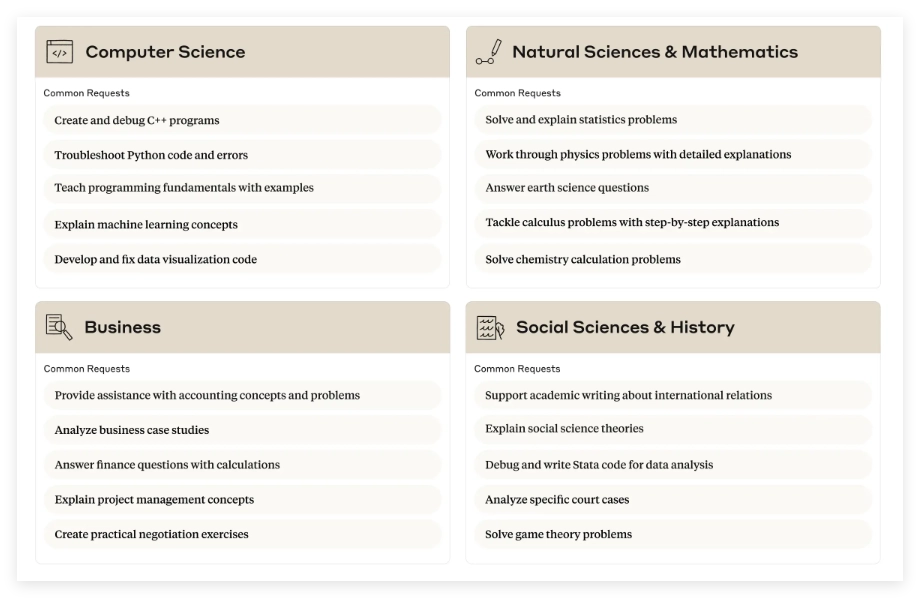
Creation, Analysis, and Problem-Solving: The Three Main Uses of AI by University Students
So, what are students actually doing with AI? The research reveals thatcreating and improving educational content is the primary use of Claude, accounting for nearly 40% of conversations (39.3%).
This includes designing practice questions, polishing essays, and summarizing academic materials. Secondly,obtaining technical explanations or solutions for academic assignments also constitutes a substantial portion (33.5%). For example, students use AI to debug code, implement programming algorithms, and solve mathematical problems. Furthermore, data analysis and visualization (11.0%), support for research design and tool development (6.5%), creating technical diagrams (3.2%), and translation/proofreading (2.4%) are also significant uses of AI.
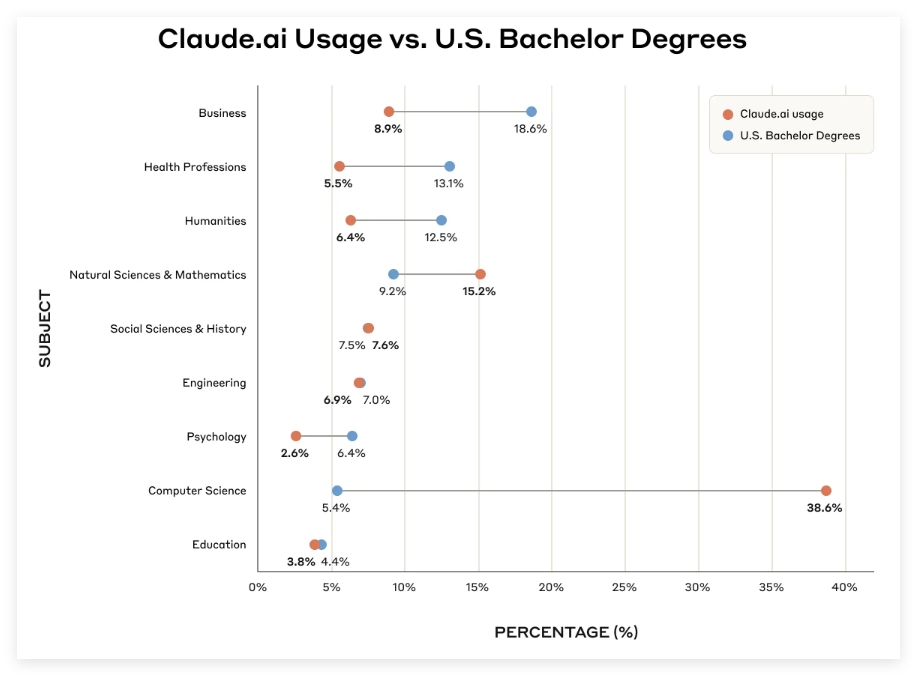
The report also identifies four main interaction patterns between students and AI:direct problem-solving, direct output creation, collaborative problem-solving, and collaborative output creation. These four patterns appear with roughly equal frequency in the data.
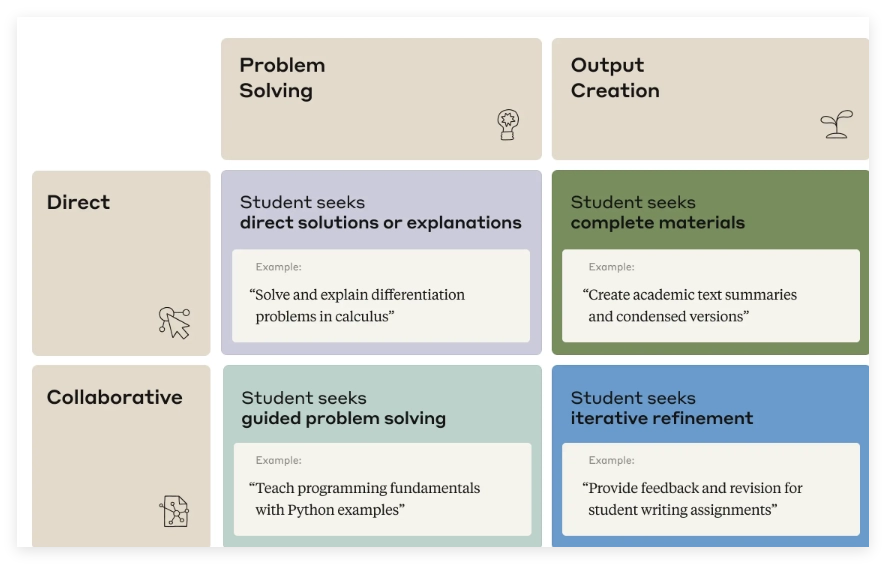
It's noteworthy that students primarily utilize AI forcreative (using information to learn new knowledge) and analytical (breaking down known information and identifying relationships) tasks. This aligns with higher-order cognitive functions in Bloom's taxonomy, but raises a crucial question: how do we ensure students don't outsource critical cognitive tasks entirely to AI systems, thereby hindering their own development?
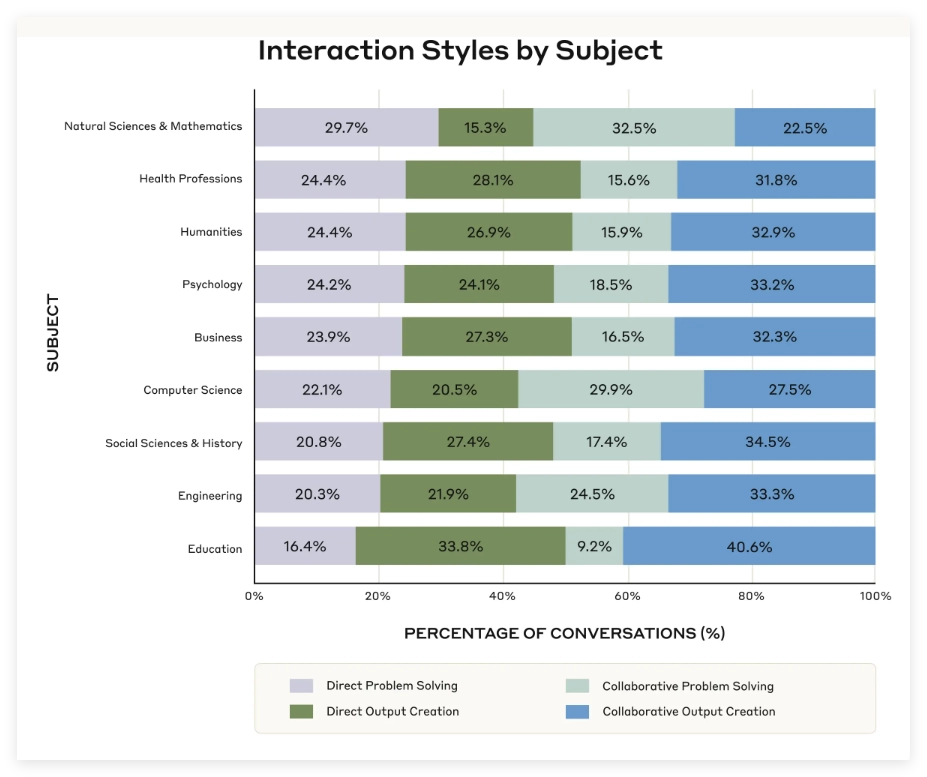
AI: A "Booster" or a "Crutch"? Deeper Reflections on Education
Students from different disciplines interact with AI in distinct ways. For example, natural science and mathematics students tend to use AI to solve specific academic problems, while computer science and engineering students favor collaborative dialogues with AI. Education students focus more on using AI to create teaching materials.
Interestingly, researchers analyzed the cognitive tasks students delegated to AI based on Bloom's taxonomy. The results show AI primarily handleshigher-order cognitive functions, such as creation and analysis, while lower-order tasks like memorization and comprehension are relatively less frequent.
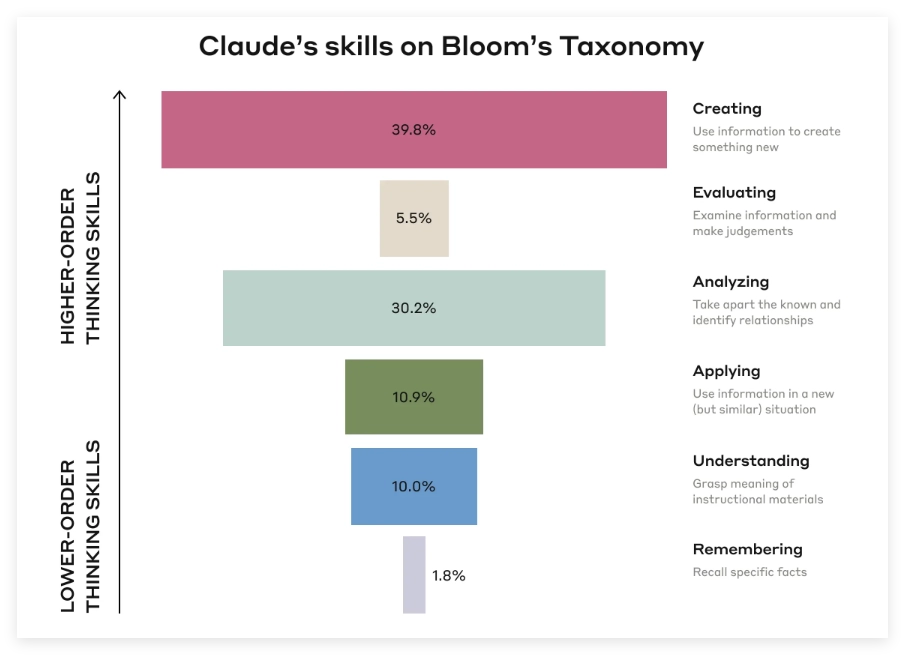
This "inverted Bloom's taxonomy pattern" prompts profound reflection on AI's role in education: is AI a "booster" enhancing student learning efficiency, or a "crutch" potentially weakening their fundamental skills? While AI demonstrates impressive creative and analytical capabilities, this doesn't necessarily mean students are actively engaging in these processes. Over-reliance on AI for higher-order cognitive tasks might hinder the development of critical thinking and other core skills.
Of course, we should acknowledge the report's limitations. The data may primarily reflect the habits of early adopters and not fully represent all university students. Furthermore, the study only analyzes Claude.ai usage; students may use other AI tools.
Educational Transformation is Here: What Lies Ahead?
This large-scale report provides valuable initial insights into how university students utilize AI. We see the potential for AI to empower learning in certain aspects.
However, as students delegate increasingly complex cognitive tasks to AI, fundamental questions emerge:How do we ensure students continue to develop foundational cognitive and metacognitive skills? How should we redefine assessment and academic integrity in an AI-powered era? When AI can generate high-quality writing or solve complex problems almost instantaneously, what does "meaningful learning" mean?
These findings will undoubtedly stimulate discussions among educators, administrators, and policymakers regarding AI's application in education. Future research needs to delve deeper into how teachers and students can effectively utilize AI, the link between AI usage and learning outcomes, and the long-term impact of AI on the future of education.
Anthropic has also begun collaborating with universities to explore AI's positive role in education, such as experimenting with "learning modes" emphasizing Socratic teaching and conceptual understanding.
Predictably, the integration of AI into higher education is still in its early stages. Guiding students to use AI correctly and effectively—as a tool to enhance learning quality rather than a shortcut that replaces thinking—will be a crucial challenge for future education.
We need to embrace technological progress while upholding the essence of education, fostering students' independent thinking and self-directed learning abilities to truly achieve educational advancement in the age of AI.